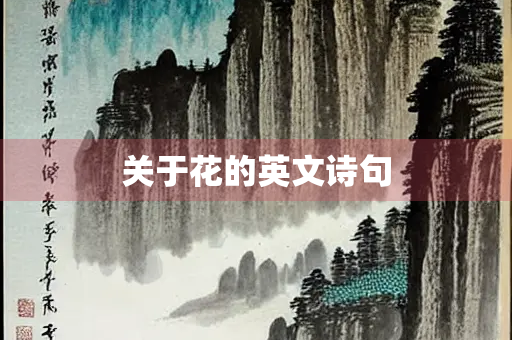
Flowers have always been an integral part of English literature. From ancient ballads to modern poetry, flowers have found their way into many works of literature. In this article, we will explore some of the most memorable poetic lines about flowers, and delve into their symbolism and meaning.
In "I Wandered Lonely as a Cloud," William Wordsworth paints a beautiful scene of a field of daffodils. This poem is often cited as one of the most quintessential pieces of British Romantic poetry, and the lines that describe the beauty of the daffodils are particularly poignant.
Wordsworths description of the daffodils as stretching along the margin of a bay, like stars on the Milky Way, create a vivid image of natural beauty. The poem is a celebration of the simple pleasures of life, and the joy that can be found in nature.
A.E. Housmans poem "Loveliest of Trees" is a short and sweet piece about the beauty of cherry blossoms. The poem is written from the perspective of a young man who is admiring the blossoming trees.
The beauty of the cherry blossoms is elevated by the fact that they are only in bloom for a short period of time. The poem is a reminder to appreciate the fleeting beauty of life, and to cherish every moment.
T.S. Eliots masterpiece, "The Waste Land," is a sprawling epic that covers a vast array of themes and subjects. Amongst the many references and allusions in the work, there are several images of flowers that appear throughout the poem.
These lines from the opening of the poem evoke the idea of rebirth and regeneration. The lilacs that grow out of the dead land symbolize a new beginning, and the idea that life can spring forth even in the darkest of times.
Robert Burns "A Red, Red Rose" is a beautiful love poem that compares the beauty of a woman to a red rose. The poem is filled with romantic imagery, and Burns use of flowers to describe his love creates a sense of intimacy and tenderness.
Burns use of the rose as a symbol of love is common in literature, and in this poem, the idea of the rose being "newly sprung in June" creates a sense of freshness and vitality.
William Blakes "The Tiger" is a poem that explores the idea of creation, and the duality of nature. In the poem, Blake describes the tiger as a fierce and powerful creature, full of beauty and terror.
The use of the tiger as a symbol of natures power and complexity is strong, and the juxtaposition of the tigers "fearful symmetry" with its beauty creates a sense of awe and wonder.
Flowers have been used as symbols in literature for centuries, with poets and writers using them to evoke powerful emotions and create vivid imagery. From the simple joy of a field of daffodils to the romance of a red rose, flowers continue to inspire some of the most memorable and beautiful lines in English literature.
本文地址: https://www.shuiwy.com/a/5835.html
文章来源:im
版权声明:除非特别标注,否则均为本站原创文章,转载时请以链接形式注明文章出处。
2025-12-09im
2025-12-09im
2025-12-09im
2025-12-09im
2025-12-09im
2025-12-09im
2025-12-09im
2025-12-09im
2025-12-09im
2025-12-09im
2024-03-03im
2024-01-24im
2023-05-29im
2023-06-04im
2023-06-16im
2023-10-07im
2023-06-20im
2023-10-07im
2023-06-19im
2023-06-14im
2025-12-09im
2025-12-09im
2025-12-09im
2025-12-09im
2025-12-09im
2025-12-09im
2025-12-09im
2025-12-09im
2025-12-09im
2025-12-09im
扫码二维码
获取最新动态
